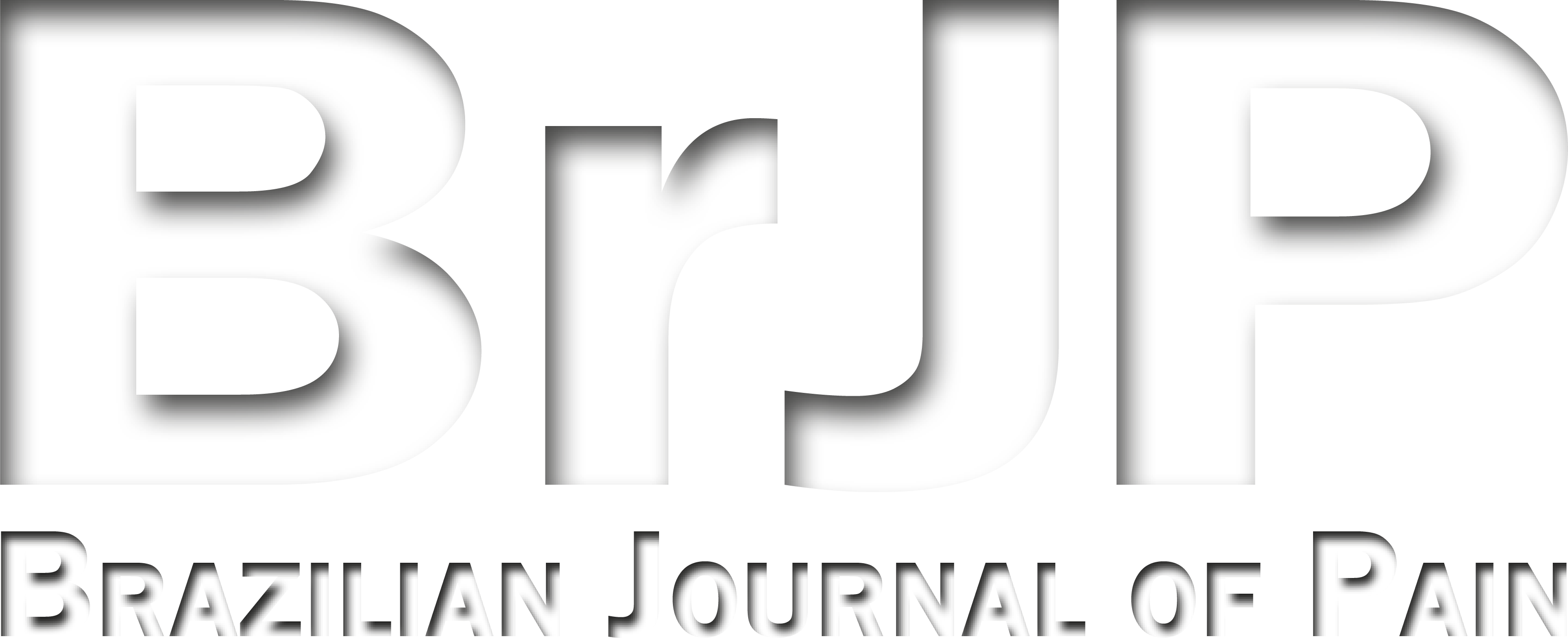Vibration associated with cryotherapy to relieve pain in children
Vibração associada à crioterapia no alívio da dor em crianças
José Marden Mendes-Neto; Sandra Lauton Santos
Abstract
Keywords
Resumo
Palavras-chave
Referências
Merskey H, Bogduk N. Classification of Chronic Pain. IASP Pain Terminology. 1994.
Bergomi P, Scudeller L, Pintaldi S, Dal Molin A. Efficacy of non-pharmacological methods of pain management in children undergoing venipuncture in a pediatric outpatient clinic: a randomized controlled trial of audiovisual distraction and external cold and vibration. J Pediatr Nurs. 2018;9(42):e66-72.
Moadad N, Kozman K, Shahine R, Ohanian S, Badr LK. Distraction using the BUZZY for children during an IV insertion. J Pediatr Nurs. 2016;31(1):64-72.
McMurtry CM, Pillai Riddell R, Taddio A, Racine N, Asmundson GJ, Noel M. Far from "Just a Poke": common painful needle procedures and the development of needle fear. Clin J Pain. 2015;31(10 Suppl):S3-11.
Ballard A, Khadra C, Adler S, Doyon-Trottier E, Le May S. Efficacy of the Buzzy® device for pain management of children during needle-related procedures: a systematic review protocol. Syst Rev. 2018;7(1):78.
Kakigi R, Shibasaki H. Mechanisms of pain relief by vibration and movement. J Neurol Neurosurg Psychiatry. 1992;55(1):282-6.
Nahra H, Plaghki L. Innocuous skin cooling modulates perception and neurophysio-logical correlates of brief CO2 laser stimuli in humans. Eur J Pain. 2005;9(1):521-30.
Monteiro PB, Fonseca-Júnior NL, Rehder JR. Eficácia do resfriamento da pele no alívio da dor desencadeada pela injeção de toxina botulínica tipo A nas distonias faciais. Rev Bras Oftalmol. 2012;71(6):364-7.
Nunes S, Vargens OM. A crioterapia como estratégia no alívio da dor no trabalho de parto: um estudo exploratorio. Rev Enferm UERJ. 2007;15(3):337-42.
Cochrane DJ. Effectiveness of using wearable vibration therapy to alleviate muscle soreness. Eur J Appl Physiol. 2017;117(3):501-9.
Fix WC, Chiesa-Fuxench ZC, Shin T, Etzkorn J, Howe N, Miller CJ. Use of a vibrating kinetic anesthesia device reduces the pain of lidocaine injections: a randomized split-body trial. J Am Acad Dermatol. 2019;80(1):58-9.
Mendes KDS, Silveira RCCP, Galvão CM. Revisão integrativa: método de pesquisa para a incorporação de evidências na saúde e na enfermagem. Texto Contexto Enferm. 2008;17(4):758-64.
Galvão CM. Níveis de evidência. Acta Paul Enferm. 2006;19(2):V.
Canbulat Sahiner N, Inal S, Sevim Akbay A. The effect of combined stimulation of external cold and vibration during immunization on pain and anxiety levels in children. J Perianesth Nurs. 2015;30(3):228-35.
Tan GX, Tunkel DE. Control of pain after tonsillectomy in children: a review. JAMA Otolaryngol Head Neck Surg. 2017;143(9):937-42.
Silva LD, Tacla MT, Rossetto EG. Manejo da dor pós-operatória na visão dos pais da criança hospitalizada. Esc Anna Nery. 2010;14(3):519-26.
Virgens TR, Greco CSS, Carvalho ML. A influência da sucção não nutritiva como analgesia não farmacológica em recém-nascido durante procedimentos dolorosos: revisão sistemática. Rev Ciênc Méd. 2018;27(1):23-37.
Baxter AL, Cohen LL, McElvery HL, Lawson ML, von Baeyer CL. An integration of vibration and cold relieves venipuncture pain in a pediatric emergency department. Pediatr Emerg Care. 2011;27(12):1151-6.
Pakif Cetin S, Çevik K. Effects of vibration and cold application on pain and anxiety during intravenous catheterization. J Perianesth Nurs. 2019;34(4):701-9.
Redfern RE, Chen JT, Sibrel S. Effects of thermomechanical stimulation during vaccination on anxiety, pain, and satisfaction in pediatric patients: a randomized controlled trial. J Pediatr Nurs. 2018;38:1-7.
Schreiber S, Cozzi G, Rutigliano R, Assandro P, Tubaro M, Cortellazzo Wiel L. Analgesia by cooling vibration during venipuncture in children with cognitive impairment. Acta Paediatr. 2016;105(1):e12-6.
Canbulat N, Ayhan F, Inal S. Effectiveness of external cold and vibration for procedural pain relief during peripheral intravenous cannulation in pediatric patients. Pain Manag Nurs. 2015;16(1):33-9.
Inal S, Kelleci M. Relief of pain during blood specimen collection in pediatric patients. MCN Am J Matern Child Nurs. 2012;37(5):339-45.
Submetido em:
07/05/2019
Aceito em:
27/09/2019


